When it comes to aftermarket exhaust components, there are two distinct tiers of products. On the bottom end are companies that cater to what is politely called the ‘urban’ market (decode that as you will). These riders want a “loud, barking exhaust,” as LeoVince USA CEO Tim Calhoun told me in his Richmond, California office. With that crowd, a short, loud, bling-ey canister is “almost mandatory—you better be rolling with something on your bike,” and quality is less important. I won’t name brands, but my experience with cans intended for these audiences is that they are poorly designed and manufactured, hard to mount without a big crowbar and some Dremel surgery, and tend to rust, fall apart and blow out their packing quickly. Okay if your goal is to draw attention to yourself during infrequent rides, not so good if you put serious miles on your bike in all kinds of conditions.
Serious riders are more discerning and seek the best value. We want price, performance, low weight and quality manufacture. Luckily, the European brands are manufactured for markets that require aftermarket accessories be warranted, meet emissions and sound requirements and fit properly. That’s probably why LeoVince USA is based right here.
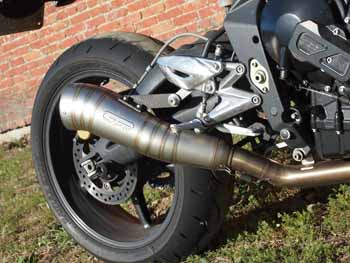
LV's GP Pro full systems are designed to work well in street applications, but offer 21st-century MotoGP style.
Haven’t heard of LeoVince? It’s actually tied with Yoshimura R&D as the oldest manufacturer of aftermarket exhausts in the world. Parent company SITO Group was founded in 1954 by Pietro Mollo—still president to this day. Originally a supplier of performance exhausts for two-stroke scooters, by the 1980s SITO was building exhausts for all types of machines, both street and race, on-road and off. The 1987 Milan motorcycle show saw the launch of the LeoVince brand, an offshoot intended originally to showcase high-performance products like the titanium four-into-one system proudly displayed in LeoVince’s booth. Today, LeoVince, together with the SITO and Silvertail brands, is a huge seller, with over 500,000 units produced annually.
Like our readers, I wanted to get more performance, save a little weight and improve the looks of my ride, a 2010 Triumph Street Triple R. LeoVince was ready to help out with one of its hand-made GP Pro full systems and tuning genius Manny Hauswirth to help me set it up.
I can’t lie to you; life as a motojournalist is good. I rolled my bike up to the well-appointed LeoVince garage, where Hauswirth strapped it to a lift, unbolted my old system and bolted on the shiny new LeoVince components in less time than it took for my bike to cool down (we have the burned knuckles to prove it).
You may not have an expert factory technician and lift-equipped garage (with a dyno, don’t forget the dyno), but LeoVince designs its products to be easy to install for everybody. All instructions and parts are included; there’s nothing more to buy. “We want it to be Christmas morning when you open that box,” said Calhoun. My system came with two different removable sound inserts—off-road systems include a wash plug and spark arrestor. Calhoun pointed out proudly that even a spring puller is included—no more stabbing yourself with a screwdriver trying to get those springs onto your header.
The fit was perfect (though I don’t know how well this system would work with aftermarket rearsets, as the can mounts to the footrest brackets) and the system felt as solid as OEM parts when everything was fastened down. Finish and build quality was outstanding, with the beautiful TIG welds and polished stainless steel backing up Calhoun’s claims of “old-world craftsmanship.” Everybody says it, but it’s nice to actually see it still being practiced in LeoVince’s two European factories (one in Italy, the other in Poland).
After bolting the system on, we rolled the bike onto the Dynojet to see what gains were to be had. LeoVince designs its slip-ons and street systems to boost power without any need for tuning, but my experience told me this wasn’t possible. My experience was wrong, I tell you—peak power went from 96 horsepower (aside: removing the plastic screen that sits inside your air intake gets you a full horsepower) to over 102 with the noise insert removed—a 6-percent increase with no tuning required. I later found out my chain was too tight—LeoVince claims a 10-15 percent boost with its full systems.
But you don’t ride a dyno chart. How much time do you spend with your throttle wide open? “Some brands focus on peak power,” Calhoun told me, but “we’re into rideable power.” And that’s what we want, right? You want to feel results from your engine tuning when you open the throttle coming off a turn, even if you’re not in the optimal gear. “It’s all about linear power, from roll-on to redline, the broadest, straightest power curve possible.” And it’s true—I felt gains in throttle response and power across the rev range, though midrange performance was a little choked up as a result of a lean mixture thanks to the bike’s O2 sensor. To harness the full potential of any exhaust system, you must ditch that sucker by removing the sensor (LeoVince includes a nice stainless-steel plug, drilled for safety wire, to assist) using an aftermarket FI tuning system like the Bazzaz or a Power Commander, but that would violate CARB and DOT regulations and That Would Be Wrong. We want to be good citizens, no?
And that’s a key difference between the upper tier of high-quality exhausts designed for the European market and the cheaper, louder, flashier components intended for domestic consumption: civility. Customers can install the Euro systems and still comply with government sound and emissions regulations. With the quiet insert in place, my system loses just a few hp on top, with no detectable change in pulling power where it counts. And my neighbors don’t hate me quite as much as they do with the muffler fully uncorked. My iPhone sound-meter app showed under 90 decibels, which while isn’t exactly soothing, is a lot more pleasing to the general public than the earsplitting straight pipes fitted to V-Twins or the barking cans you’ll find on bikes ridden by the backwards ballcap street-racing crowd.
For $1049, the GP Pro system for my Street Triple is a bargain. It’s well engineered, nicely made and significantly less expensive than many of its competitor’s products. LeoVince is clearly a company staffed and run by enthusiasts who value building and selling quality products rather than maximizing profit. Customers step up to the higher tier of exhaust components, at prices similar to the cruder, less durable lower-tier products.
That value position is creating success for LeoVince. Since the company took over its distribution from Western Power Sports, the USA subsidiary has had its best year ever, with 30 percent sales growth over 2010. Over 200 dealers nationwide inventory LeoVince products, no mean feat in these days of recession and Internet mail-order houses.
A competitively priced product, made in Europe, doing gangbusters business in the Great Recession? That equation flies in the face of common wisdom: that only cheap Asian labor can build competitive products, that Western workers are lazy and spoiled. It gives me hope that maybe the future of Western civilization won’t involve selling each other cheeseburgers. As Pietro Mollo said, “Not everybody can be a policeman, doctor or politician—if we don’t have industry, how can we afford to buy things?” More to the point, how will we afford to have snarling, high-powered motorcycles? LeoVince shows that it’s possible.
Find out more about LeoVince by visiting leovinceusa.com or calling 510/232-4040.
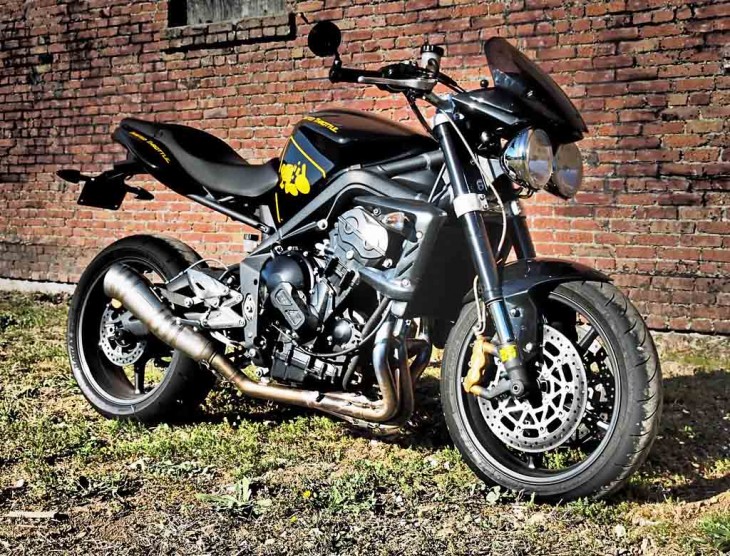


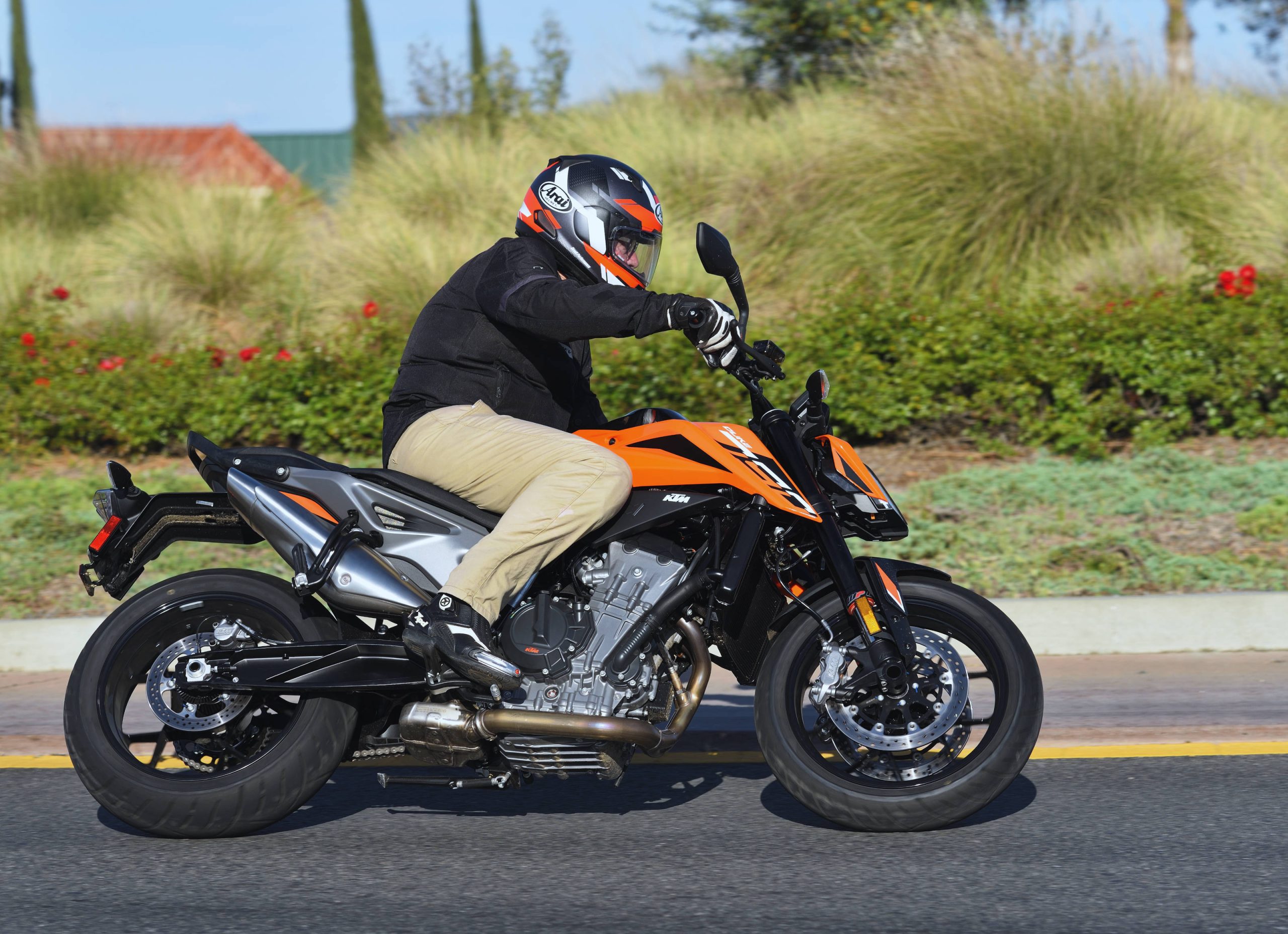
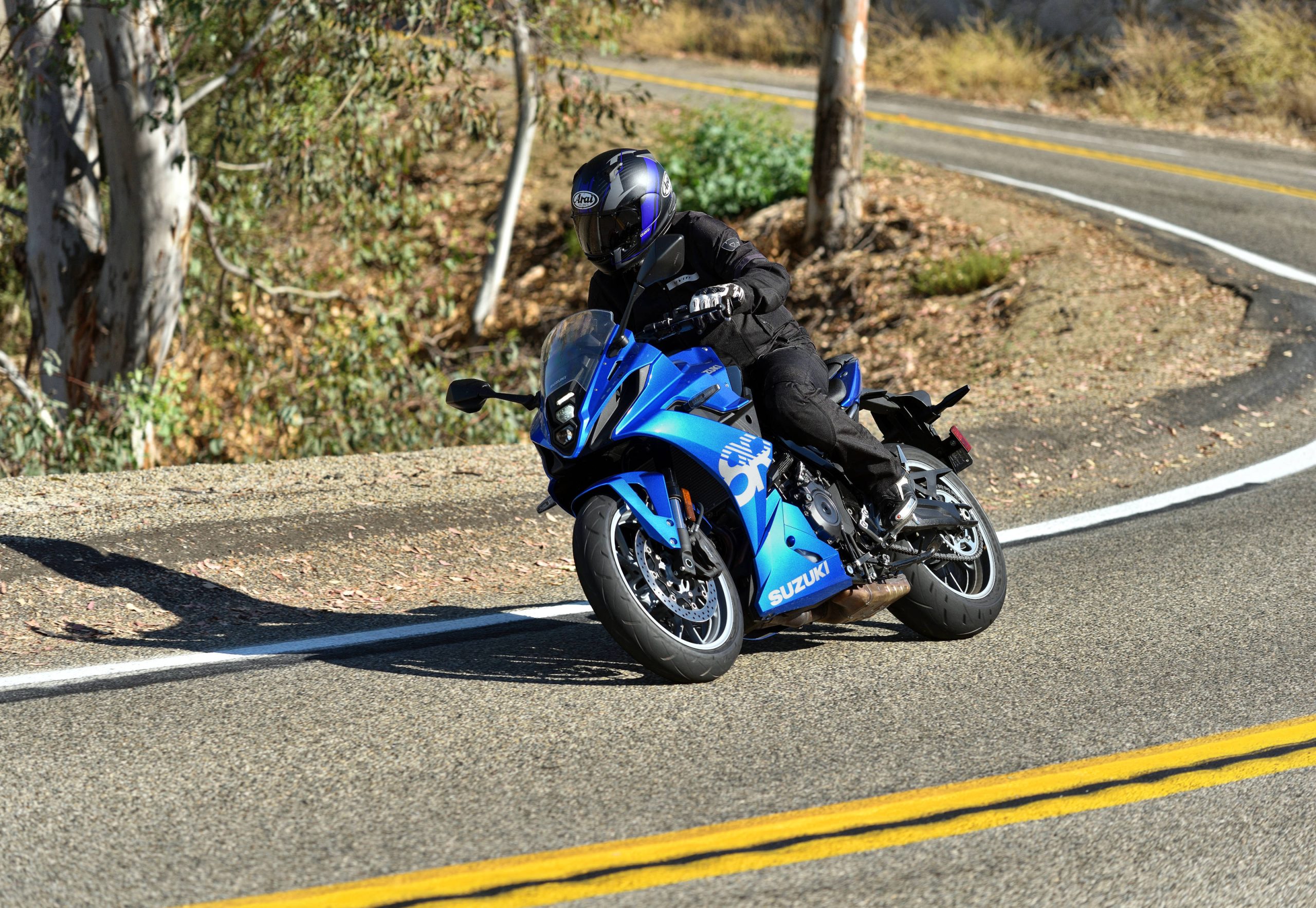
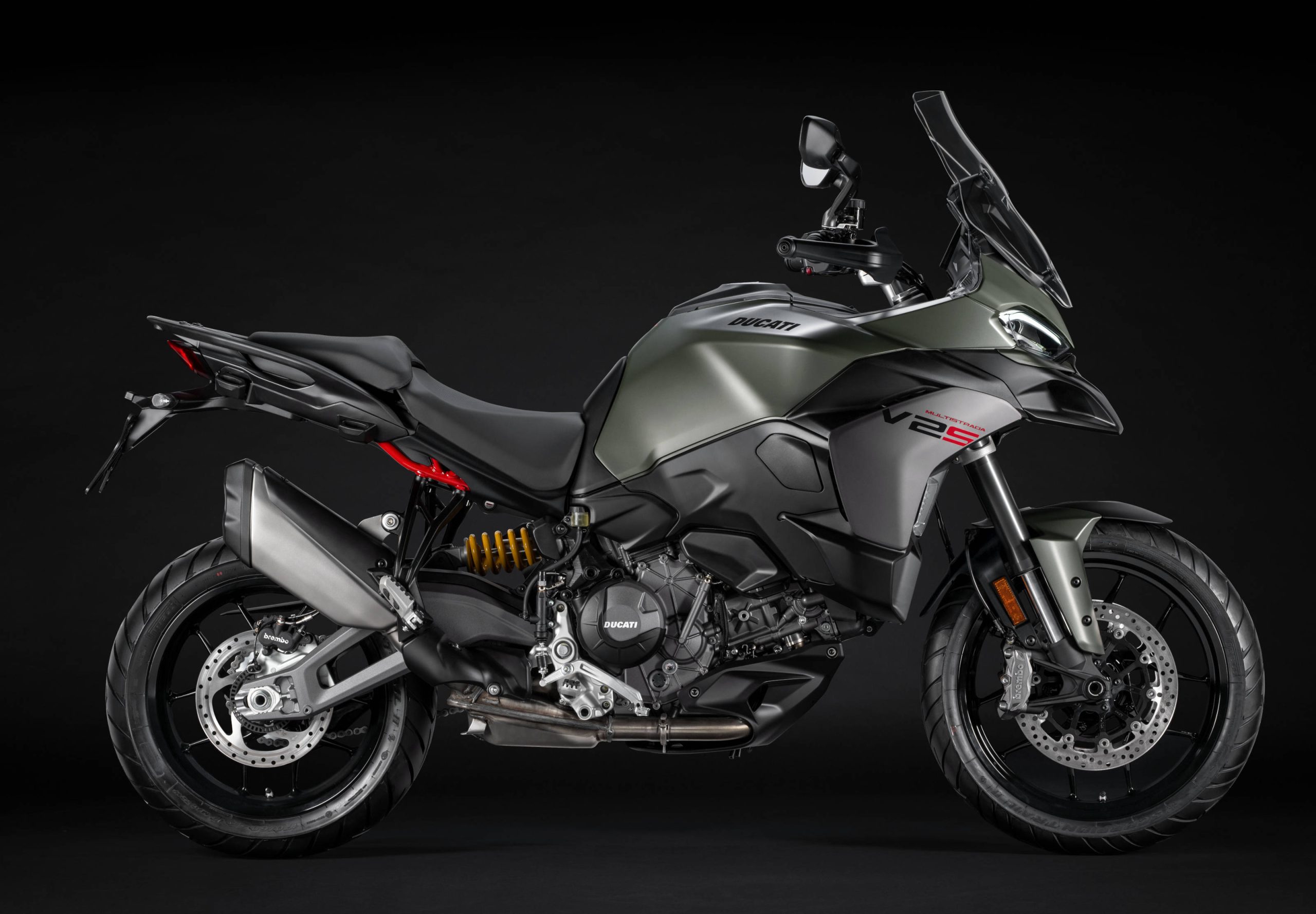
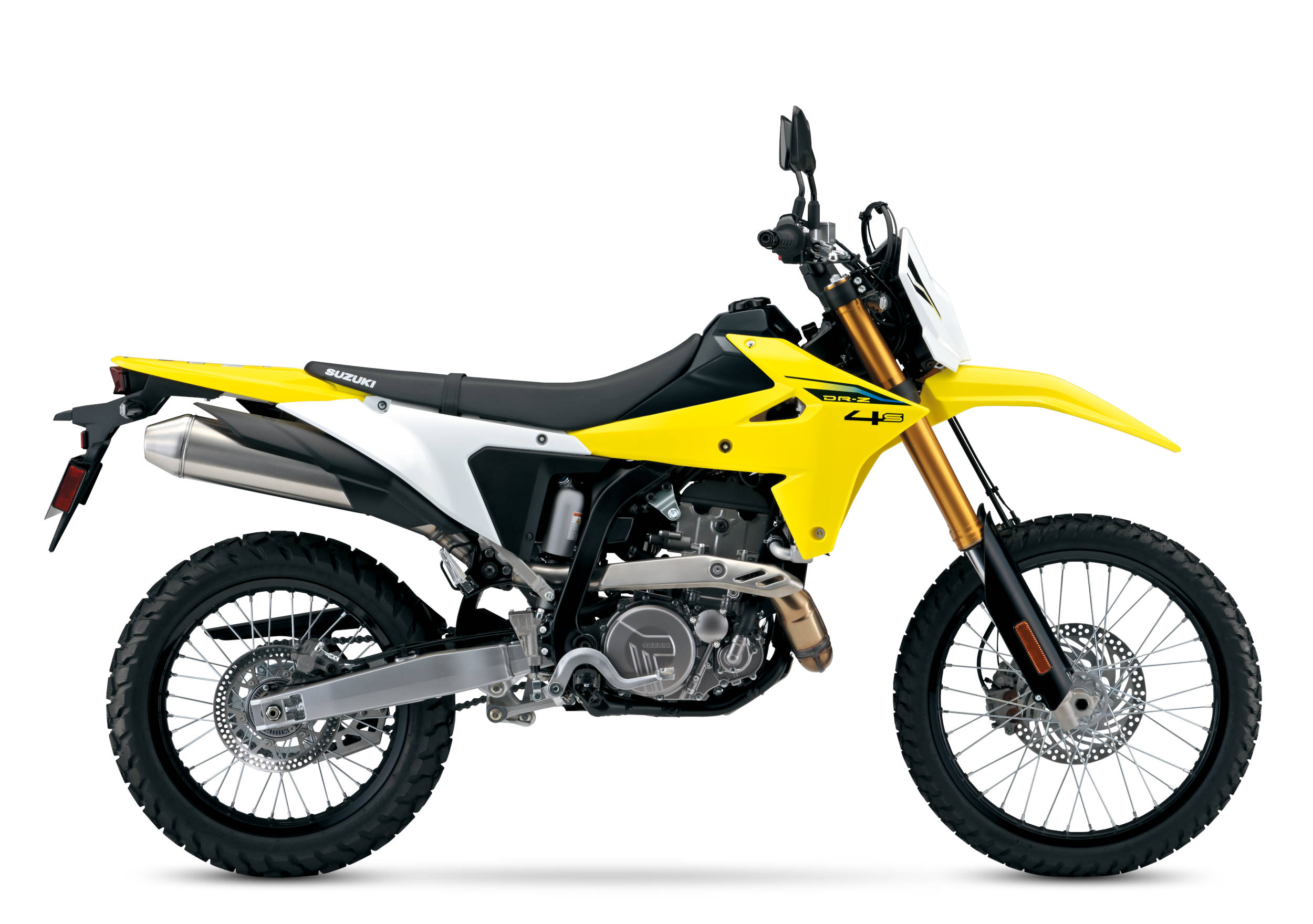
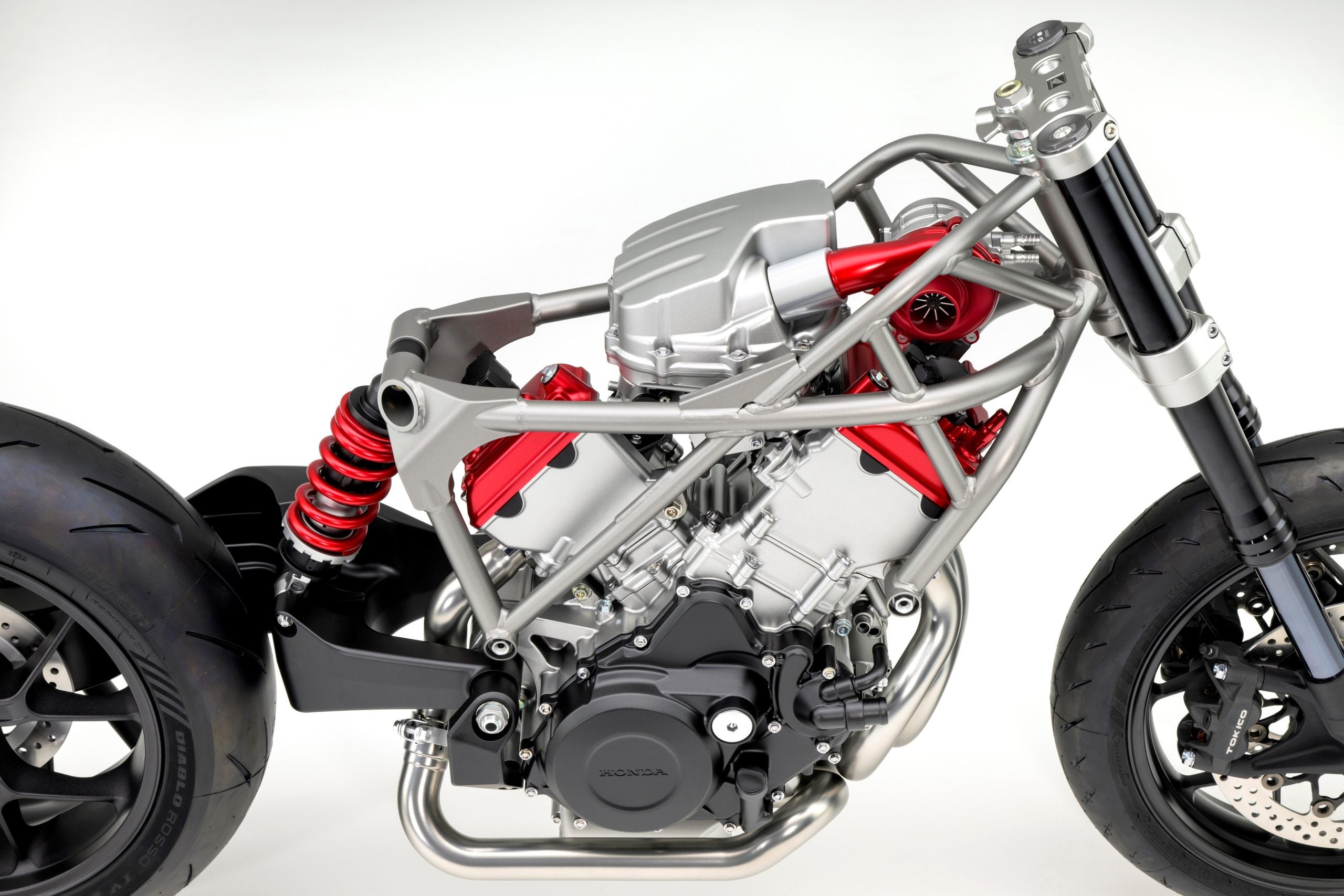
Wow, tough Crowd!
Aside from my snide comment regarding the backwards hat brigade (Merely a reference to the author’s own insistance he is not a part of “that” crowd and is a serious rider that wants “price, performance, low weight and quality manufacture”)…
Do you disagree with anything I said?
Let me get this straight…
It’s lighter than stock, but we don’t know by how much. It feels stronger in the mid-range, but without comparative dyno charts we can’t really verify (I don’t trust your butt). Maybe the O2 sensor was buggering the midrange (I thought the midrange felt better?), and although the pipe came with the appropriate block-off hardware, and Triumph apparently gives you free software for EFI tuning, and you had access to a Leo Vince technician and a Dyno, you can’t really say for sure.
About the only hard data you gave us is the peak HP numbers, but maybe your chain was too tight, and maybe that affected your seemingly poor 6% gain. You didn’t even say what the headers or canister were made out of beyond a vague reference to nicely polished stainless steel.
So it’s a pipe made from something, that’s probably some amount lighter than stock, that didn’t produce the expected peak horsepower, that apparently focuses more on linear power, but that also felt choked up in the mid-range.
Am I missing something here?
I have no doubt this is a fine product, but this article misses the mark on so many points it just feels like an advertisement stating “Hey, this pipe is cool man!!! And the factory says you should get at least 10HP!!! (But I only got 5HP)” And shouldn’t that sort of nonesense be left for the backwards/sideways-hat brigade?
I think the only thing you’re missing is that 6 hp for $1049 is a “bargain”
On the basis of aesthetics alone, I prefer the look of the Arrow low pipes. This pipe looks like a car muffler company cobbled it together. But, hey, if you like it…..!!!
It’s totally GP style – all hand-welded and beautiful. Made to fit the bike perfectly. Take a look at Casey Stoner’s ride:
http://i256.photobucket.com/albums/hh184/racewerks/termi/20114037865.jpg
except that it doesnt fit the bike perfectly. it looks tacked on. the bike was designed for 2 high mount pipes, now it looks like there is a hole there.
Loud pipes = tickets Like a dinner bell to ticket writing cops Want more speeding tickets announce your coming
Hey Gabe – what’s with the Twisted Throttle stickers on your bike?
A long and uninteresting story! I know I need to paint.
Breaks up the flow of the bike’s lines and splits them in two directions–each lacking visual concentration and focus.
File this one under the “works great, looks like sh*t” category.
Nice bike. Sweet looking exhaust!
I do find it funny that you are worried about breaking EPA/CARB laws by fitting (or not fitting in this case) a Bazzazz or Power Commander to adjust the air/fuel mixture when you’ve already broke the law with reguards emmissions by getting rid of the catalytic converter and noise/decible limits with the open exhaust system… Irony?
To a most delicious degree!
One of the great things about Triumph is that they have a factory CPU download that relieves you of the necessity of all that, of buying and installing and dynoing that stupid Power Commander. The Triumph download suits the Triumph model Arrow exhaust just perfectly.
It makes no sense to get a diffeent brand exhaust than the Arrow that is made for the Triumph model you have, and they all have them, unless you have no practicality concerns at all, no resale concerns, no money concerns, no consequence concerns. If you can just buy the Leo Vince or whatever, and buy a Power Commander, and fuddle and re-fuddle through all the different “maps,” none of which works exactly right, and then throw it away if the Air/Fuel mixture doesn’t come out right, which it won’t, and throw it away if you can’t resell it because no one wants a Leo Vince exhaust on their bike but you, then go ahead.
But Triumphs are made for the Arrow. They download the specs, and you’re gone and it works great, and it just screeeams.
I think that is a very closed minded view. A lot of people like Leo Vince. Your argument is akin to saying that only Muzzy’s can be fitted to a Kawasaki, or only Yoshimura’s can go on a Suzuki. Yes, Arrow is a great brand and is built for each Triumph but if you don’t want the same exhaust that ever other Triumph owner has it’s good to have options. Also, as far as having to “fuddle through all the different ‘maps,’ none of which works exactly right” that is also ignorant. It has never been easier to program a bike at home and some new systems even have their own O2 sensor so that they are self calibrating.
I guess we can see that spending $1000+ on a full system is wasted on this crowd. I might consider a replacement with such if my stock system was broken and I was looking for a change in look (and sound). The performance improvement less interests me because I already feel I have plenty and I’m quiet. A loud exhaust gets old real fast and does nothing for the neighbors around you.
You guys are adding videos to your test rides for us to enjoy….how could you overlook a video (or at the least a sound clip) for an article on an exhaust?? C’mon….we want to HEAR this thing!!
I give this a FAIL without video.
Nuff said.
Gabe, I am glad that you wrote this:
“I felt gains in throttle response and power across the rev range, though midrange performance was a little choked up as a result of a lean mixture thanks to the bike’s O2 sensor. To harness the full potential of any exhaust system, you must ditch that sucker by removing the sensor (LeoVince includes a nice stainless-steel plug, drilled for safety wire, to assist) using an aftermarket FI tuning system like the Bazzaz or a Power Commander, but that would violate CARB and DOT regulations and That Would Be Wrong. We want to be good citizens, no?”
Now let’s add something to that, because you did not go far enough.
Within a short time span the California Air Resources Board (CARB) will be able to fine any California motorcycle dealership $2500 per bike sale or resale of any motorcycle that does not meet CARB standards. No dealership is going to touch your bike on trade-in unless you can provide the full stock exhaust system that can be re-installed prior to sale, or unless you leave the O2 sensor AND any catalytic converter installed on the bike. A slip-on downstream of the O2 sensor and catalytic converter will still be legal, assuming it meets noise standards, but anything else MUST be CARB certified before the bike can be resold.
Just to be perfectly clear, a dealership with which I am familiar just turned down a late-model CBR600 as a trade-in because the stock exhaust was gone, and the retail price for a new stock exhaust required to make the bike saleable again is $2600. In deference to the dealership I will not quote the wholesale price for that stock exhaust. The bike owner was pissed, but he modified the bike without checking into what he was doing to his investment.
So I would be very careful about advising people to spend a thousand dollars on a soon-to-be illegal aftermarket accessory that essentially will make their bike a pile of junk for trade-in purposes.
The best thing to do if one is going to buy an aftermarket exhaust is to save every last nut, bolt, screw, and washer from the stock exhaust.
” The best thing to do if one is going to buy an aftermarket exhaust is to save every last nut, bolt, screw, and washer from the stock exhaust. ”
That is sage advice Tom. I should’ve been more thoughtful in my post about my stock exhaust on my Street Triple R.
I also have a modified 2010 1125R. If I needed to only have one bike, rather than being able to select one for my quiet daily rider, I’d have to stay stock.
My approach to accessorizing has become to save everything, not just stock exhaust, because I’ve had better luck returning my bikes to stock for resale, then selling all the bling on eBay or brand specific forums.
I think the pipe looks cool Gabe, and I’m sure it will hold up well.
That’s a point worth making, thanks for bringing it up. It might be a good idea to have aftermarket fitted at dealership and save the expensive exhaust for resale or trade in. Those catalalized exhaust will be VERY expensive to replace, even with a deductible.
The stock exhaust on my 2010 Street Triple fits nicely, came with a 2 year warranty, probably won’t ever need repacking, and does something no aftermarket exhaust will allow me to do…..leave my house at 4:00 AM for work everyday without waking my family and pissing off my neighbors.
To me, that’s priceless. 🙂
Too bad this isn’t a story about how you should leave your bike’s exhaust stock!
For another $1,000 or so beyond this you could have gotten +30HP, more torque and a stock Triumph, the Speed Triple. I’ve been there, too; once you fall victim to the customizing bug, it’s hard to ignore “improving” your steed. But to all those who think their bike is all that and a bag of potato chips, why make it “better” in the first place? Case of diminishing returns — in the end of your pipe and wallet.
since when is $1049.00 a bargin?? and dont say compared to a Akropovic system. they are both great systems but neither is a bargin!
“the cheaper, louder, flashier components intended for domestic consumption” systems would be a bargin kinda…
A hand-built, high-quality full system (not slip-ons) that works well as a bolt-on, has a waranty, and doesn’t need repacking for tens of thousands of miles usually costs more than $1049–a lot more. That’s why it’s a bargain. Buying an $800 system that falls apart and doesn’t work well isn’t a bargain–it’s a waste of money.
The full exhaust on my Multistrada 1200 was $2,500. Sure, it’s a Termignoni and came with an ECU, but $1049 ain’t bad! Had a set of LeoVince slipons on my KTM 950SM – they make great products.
Common you know you need the 10% power boost for riding a street …. why would you not be happy to drop thousand buck to do just that?? LOL
You don’t need to spend money on a box to tune a Triumph, all you need is an OBDII to USB cable(less than $20) and TuneEcu, which is free.
http://www.tuneecu.com
“For $1049, the GP Pro system for my Street Triple is a bargain.”
That’s more than 10% the new cost of the bike.